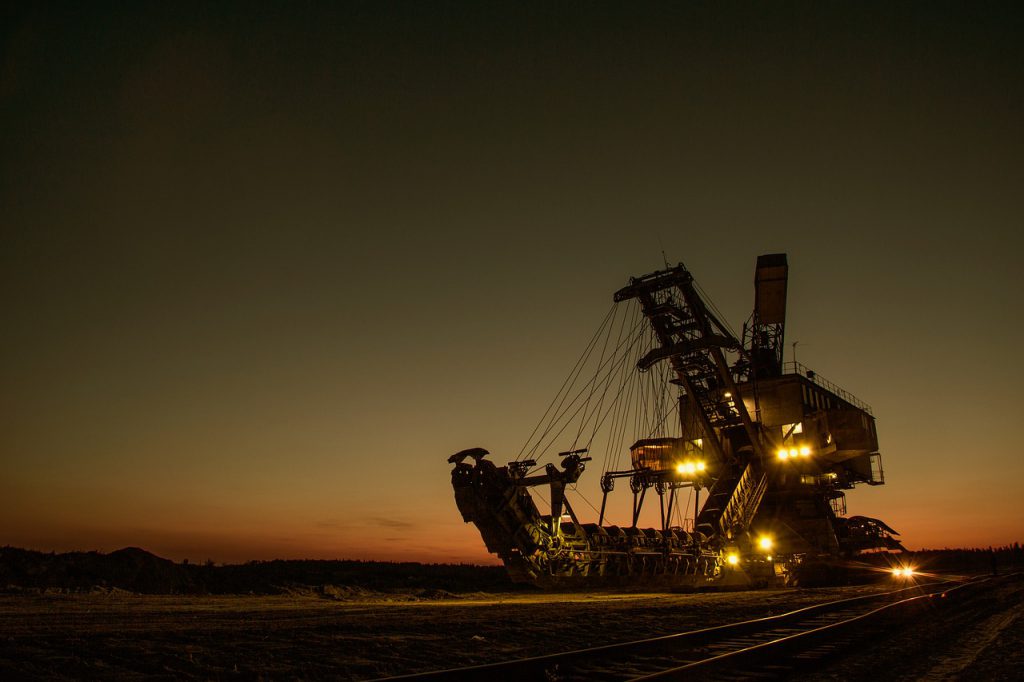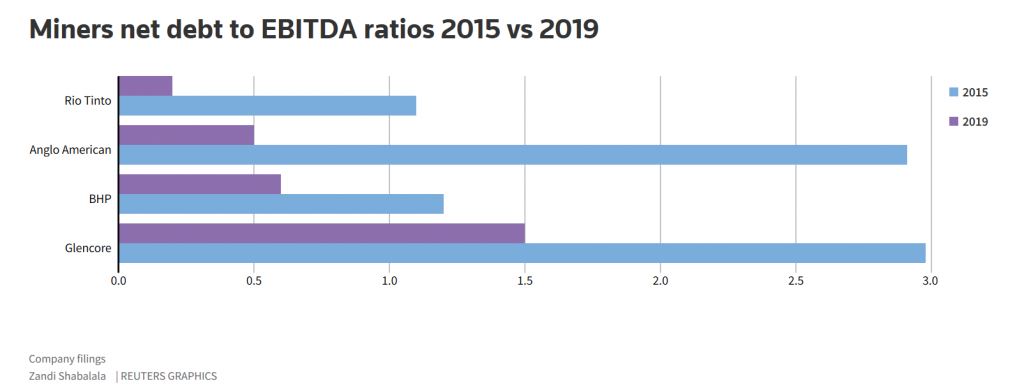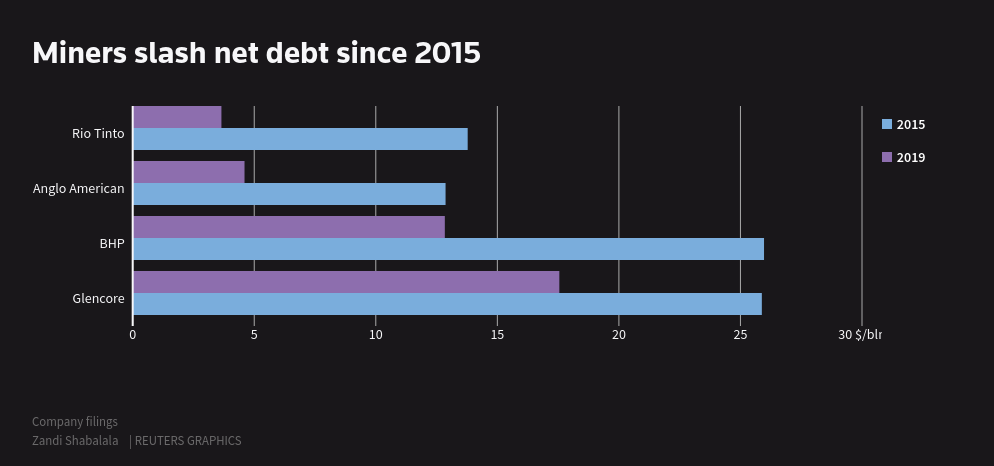
The cost of insuring against potential debt default by mining companies has risen to the highest in five years on mounting fears of recession, demand destruction and shutdowns to contain the spread of the coronavirus.
Commodity group Glencore’s five-year credit default swaps (CDS) – which traders use as a hedge against uncertainty – were up at 443 basis points on Tuesday from 190 bps at the end of February, data from information provider IHS Markit showed.
Those of Anglo American rose to 274 bps from 137 bps over the same period as the virus disrupts businesses and global supply chains, while demand slumps.
Both were above Markit’s main index of investment grade corporate CDS, which was at around 100 bps from 64.50 at the end of February.

Glencore’s relatively higher debt has driven the jump in its debt insurance costs, analysts said, while Anglo’s climbed on its exposure to South Africa and the struggling diamond sector.
Rio Tinto and BHP, whose CDS have risen more modestly, have a relatively conservative balance sheet and the mix of commodities they own made them less vulnerable, they said.
All four miners declined to comment.
Overall since the 2015-16 commodity market slump, miners have slashed debt, cut costs and shied away from mergers and acquisitions to strengthen financial positions.
But stalled growth and demand as well as tumbling commodity prices are threatening that progress for some in the industry.
“If we saw a further pullback in commodity prices then Glencore’s net debt to EBITDA would begin to work back towards that uncomfortable level we saw in 2015/16,” said BMO Capital Markets analyst Edward Sterck, referring to a major commodities slump.
He added that he did not have any concerns about the financial security of the miners but that the coronavirus had raised risk in the market. In 2015, Glencore’s net debt to EBITDA ratio was at 2.98 times and at the end of 2019 sat at 1.5 times.

At Anglo, a nationwide 21-day lockdown in South Africa, which accounts for 48% of its EBITDA, and a tough environment in the diamond market have reduced its attractiveness, BMO’s Sterck said. The miner issued a $1.5 billion bond in March.
Meanwhile, Goldman Sachs upgraded BHP to “buy” from “neutral” on Friday, citing a strong balance sheet that could enable them to buy back stock and assets.
The four miners have cut net debt from a combined $79 billion in 2015 to $39 billion at the end of 2019, and rising profits have seen them return record dividends and embark on share buybacks.
“The lesson the mining industry, and Glencore in particular, learned pretty clearly in 2015 was that the balance sheet has basically become sacred,” said Chris LaFemina, chief equities analyst at Jefferies.
Glencore in March deferred payment of its 2020 dividend in a move to cushion itself against what could be a worsening global economy. Its debt stood at $17.6 billion in 2019 from $26 billion in 2015.
Capital expenditure will come under scrutiny in the current climate but there have been few significant delays to major projects.
“We are in uncharted territory so if you are one of the majors you will immediately go into cash preservation mode for the foreseeable future,” a mining banker said.
(By Zandi Shabalala; Editing by Emelia Sithole-Matarise)
Comments